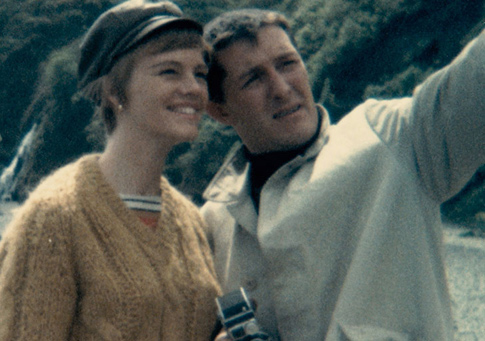“But if I have learned anything from making this film, it is that we can’t all be right and we can’t all be wrong. So we must be unintentionally distorting things to varying degrees in order to feed our own version of what we need the past and history to be, and in our way, we must all be telling the truth as well.” – Sara Polley
The traditional documentary form is known as expository. Expository documentaries “fabricate a narrative of authority” (Screen Acting 3225). They are created with the goal of teaching and increasing the audiences awareness about a historical, scientific, political, social, factual, or phenomenal event. Within these types of documentaries, re-enactments, docu-dramas, archival photographs, shorts films, and original documents are used in order to validate the information that is being presented. An example of an expository documentary is the Canadian documentary film entitled, Reel Injun (2009).
Sarah Polley’s Stories We Tell, is and example of a reflexive documentary. Reflexive documentaries are very different from expository documentaries because the content is more subjective. These documentaries are normally constructed around the making of the film. According to Sarah Polley, “Because the film was so much about storytelling and how stories are constructed, it would have felt really false to me to leave out the fact that I was constructing this story — and that this, in itself, was very subjective”. This means that out takes, editing, cameras, actor coaching, and directing are all shown as part of the film. As a result the vulnerability of the film maker, cast, film crew, and the overall process is shown. This challenges the authenticity of those involved.
Additionally, this form exposes the film maker (Sarah Polley). An example of her “exposure” is her fear and hesitation, when she had to tell Michael Polley that he was not her biological father. This gives the audience a sense of her character. Another example is the fact that the precursor of her curiosity regarding biological father, was a family joke. Polley was often the subject of ridicule within her family, with regards to her mother’s infidelity, for many years. The idea of taking authority of this joke, by examining its validity and then owning it by presenting it to an audience, speaks volumes.
Finally, reflexive documentaries also depict the film maker’s relationship with the subjects they film. In this case, Polley’s relationship with her brothers, sisters, Dianne Polley, Michael Polley, her biological father etc. The film allowed viewers to witness a collective resolution for all of the above mentioned individuals. These people experienced self revelation, healing, and self discovery as a result of the film making process. All of those involved received emotional closure and more meaningful relationships. Polley found out who her biological father was, and was welcomed into his family. By allowing her father to narrate the film, he was able to understand her story from her point of view. All those involved shared narratives that included memorable, positive, and negative aspects of their relationship with one another.
Sarah uses various techniques that challenge the traditional documentary form and the viewer’s notion of truth. As mentioned above re-enactments, docu-dramas, archival photographs, shorts films, and original documents are features that are typically used within expository documentaries. In the film Polley presents original documents (paternity test), archival family photos, family home videos, re-enactments of various situations, and narratives from various family members, extended family, and friends. While watching the film I had no idea that actors were being used in order to portray Diane Polley and various nostalgic family scenes, up until this was revealed closer to the end of the film. Overall the film challenges the viewers notion of truth by using elements of both expository and reflexive documentary forms. This technique blurred the distinction between fact and fiction. Additionally truth is blurred because the audience is able to draw conclusions for themselves instead of being told what to believe. This method allows for a variety of meanings and truths.
In conclusion, expository documentaries attempt to teach and mold their viewers opinions whereas reflexive documentaries allow the audience to watch the film maker learn. As a result the audience is given the freedom to create a conclusion and impression about what is being presented for themselves. All in all, I really enjoyed watching this film, and believe that Polley’s approach towards a reflexive documentary adds both a creative and unique touch.
